What is it that makes life worth living? Friends, family, a job well done, creativity expressed. And for me and many of my friends and colleagues it is the pure pure joy of being in nature and experiencing a magic moment.
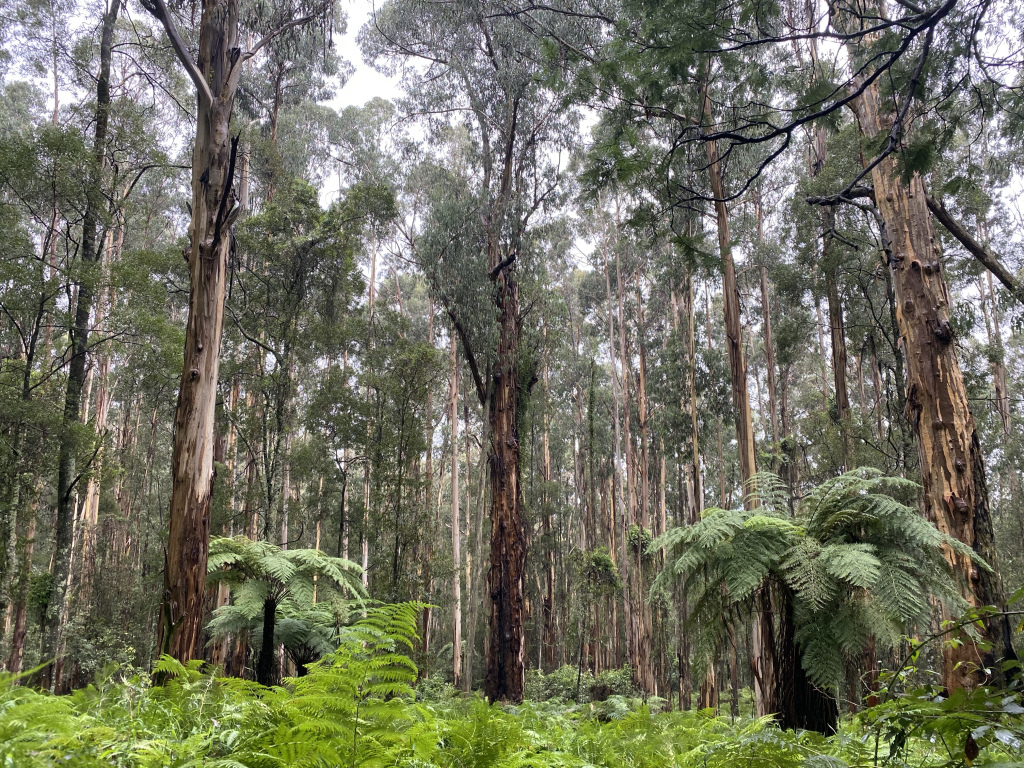
This year has been stressful. I am grateful to be working five days ( and more) a week doing social media and comms for my beloved BirdLife Australia, but as many know the information and deluge of opinions and counter opinions and downright craziness of the online world can be wearing on the soul. (Plus the very fact of the environmental collapse and societal breakdown we have been fearing as young activists in the early 90s seems to be upon us! EEK! )
I am also incredibly grateful that I have experienced lockdown here, in the Wombat Forest, surrounded by the beautiful forest, cold lakes and lovely botanic gardens.
But getting a nature fix is like a drug – sometimes you need a bigger dose! Kent – my long term birdwatching buddy and dear friend, is CEO of a health provider in Melbourne, and he too was in need of some special birding – for medicinal purposes!
The Superb Lyrebird has been a feature of BirdLife’s fundraising campaign – as these wonderful birds lost a whopping 45% of their habitat in the Black Summer fires. The Superb Lyrebird is also a flagship species for other wet forest species such as Pilotbird and Red-browed Treecreeper who have had similar very serious habitat losses. I have only seen lyrebirds a couple of times – and when I heard my workmates had travelled to Sherbrooke Forest to see these lovely birds for themselves – I wanted to too!
The lockdown #1 and subsequent reopening saw hordes of birders, photographers and day trippers inundate popular nature spots near Melbourne, eg Woodlands Historic Park for robins, the Pines for the Glossy Black-Cockatoo, and Sherbrooke Forest and surrounds for lyrebirds. In fact anywhere within 2 hours drive of Melbourne – absolutely packed! (including my home town Daylesford which has seen visitor numbers swell to Easter levels!!)
And then I saw the reports on bird Facebook groups – people’s zeal for photos, and for good views of the birds has seen them leaving the paths, trampling and removing vegetation and even disturbing nesting lyrebirds – prompting this plea from the Sherbrooke Lyrebird Study Group:
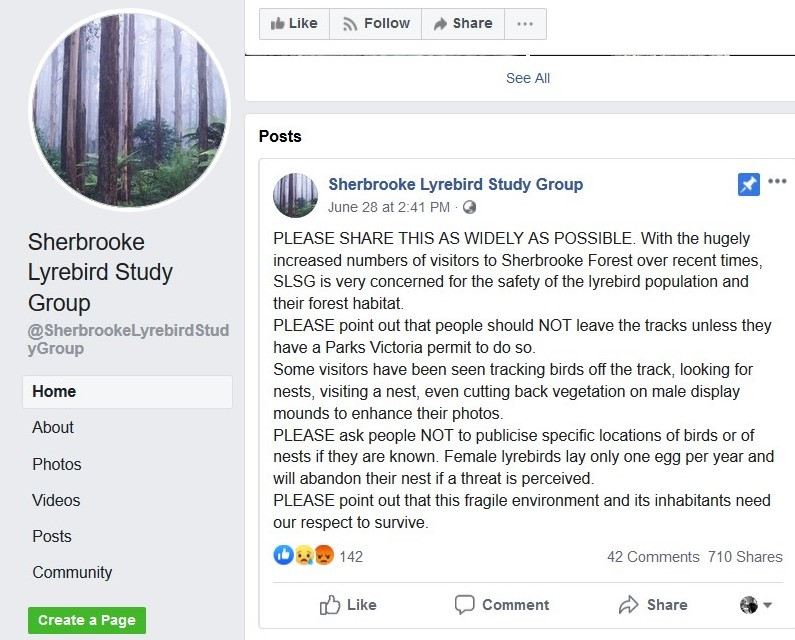
So was my desire to see a Superb Lyrebird going to just add to this horrible situation?!
I generally only leave the path if doing Birdata surveys for work or pleasure on private land. I figure if a public natural area is visited by humans very regularly, it is so important to stay on the path – all the smells and damage associated with humans are then concentrated on the path, and shy birds and animals can avoid the paths easily.
Plus – I am not a bird photographer! I take iPhone pics ( as seen in this blog) and I use my lovely little Swarovski binoculars to observe birds – and both of these activities are easily done from the path.
So after much thought – we decided that we would go to the Dandenongs to look for lyrebirds! We both took the Monday off ( sort of) so there would be less people. We knew we would stay on the path – and finally, I selected our lyrebird searching spot as the Valley Creek Picnic Ground, which on arrival Kent read out was “the most remotely located of all the Dandenong National Park picnic grounds”. Add in a drizzly day of 10 degrees – PERFECT!
But then – the virus! Kent offered to car pool from Northcote. My mum, who lives here in Daylesford and I see all the time, has a bunch of auto-immune diseases. I can’t sit in a car with someone from Northcote! No social distancing in a car. And it is hard to explain but all of us country people cannot help but view Melbourne folks as very likely carriers of the disease – to be avoided if possible! ( crazy times!)
So it was agreed! We would meet at the Dandenongs about 11 am – knowing full well both of us would be on hand for CEO biz and comms as needed 🙂
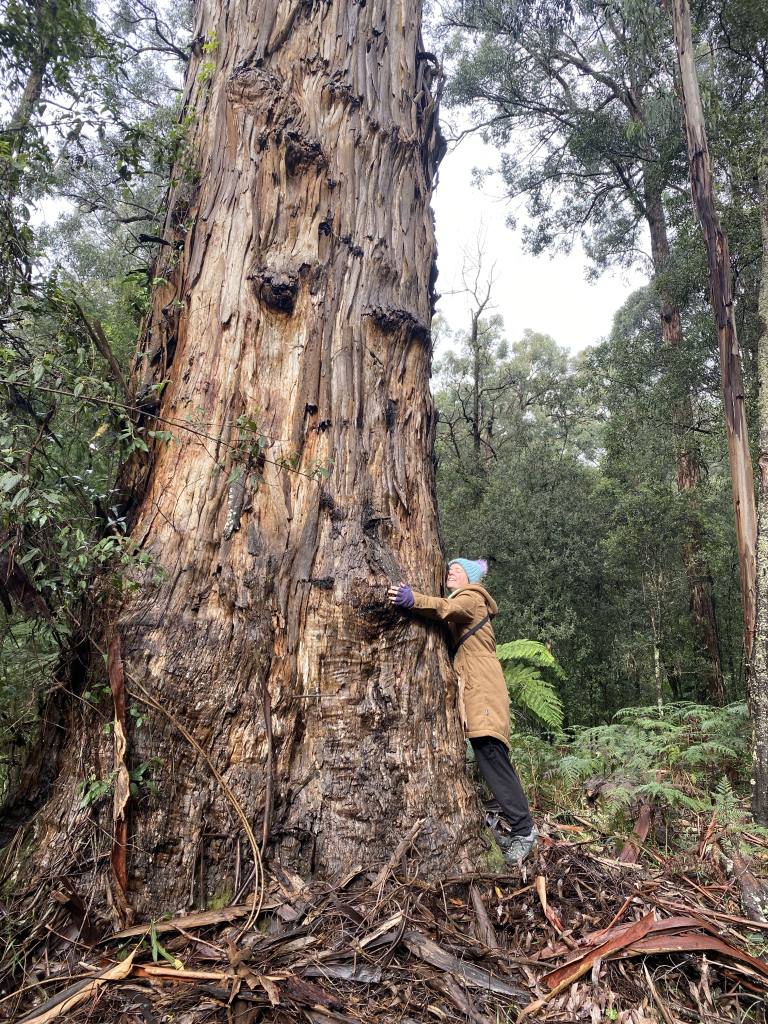
Our lyrebird adventure began with a 2 hour walk along Eagles Nest Track. In the luminous and ferny forest we encountered a winter mixed feeding flock of Eastern Yellow Robin, Grey Fantail, Brown Thornbill, and Red-browed Treecreeper. This incredible elder tree was great for some hugs – and it was in flower too! A Mountain Gum perhaps? As usual we chatted between birding bouts – work, our partners, and of course discussions about the second wave of coranavirus cases in Melbourne. ( Stage three returned the very next day).
We could hear a lyrebird calling very far away – but nowhere near the tracks, so we headed back to the cars for a snack and for Kent to do some work. We took the advice of an older walker chap, a long term local wandering the forest that we met on arrival – and took the track up the hill. This track was the most narrow we had been on yet, and felt so immersive! The undergrowth was dense and lush, either Dusty Miller or bright green False Bracken. Clematis grew thickly up the massive gum trees, with tiny climbing ferns winding about the base. Bright orange bracket fungi on the fallen logs added a pop of colour too! ( and Kent’s jacket – safety first! ha ha) 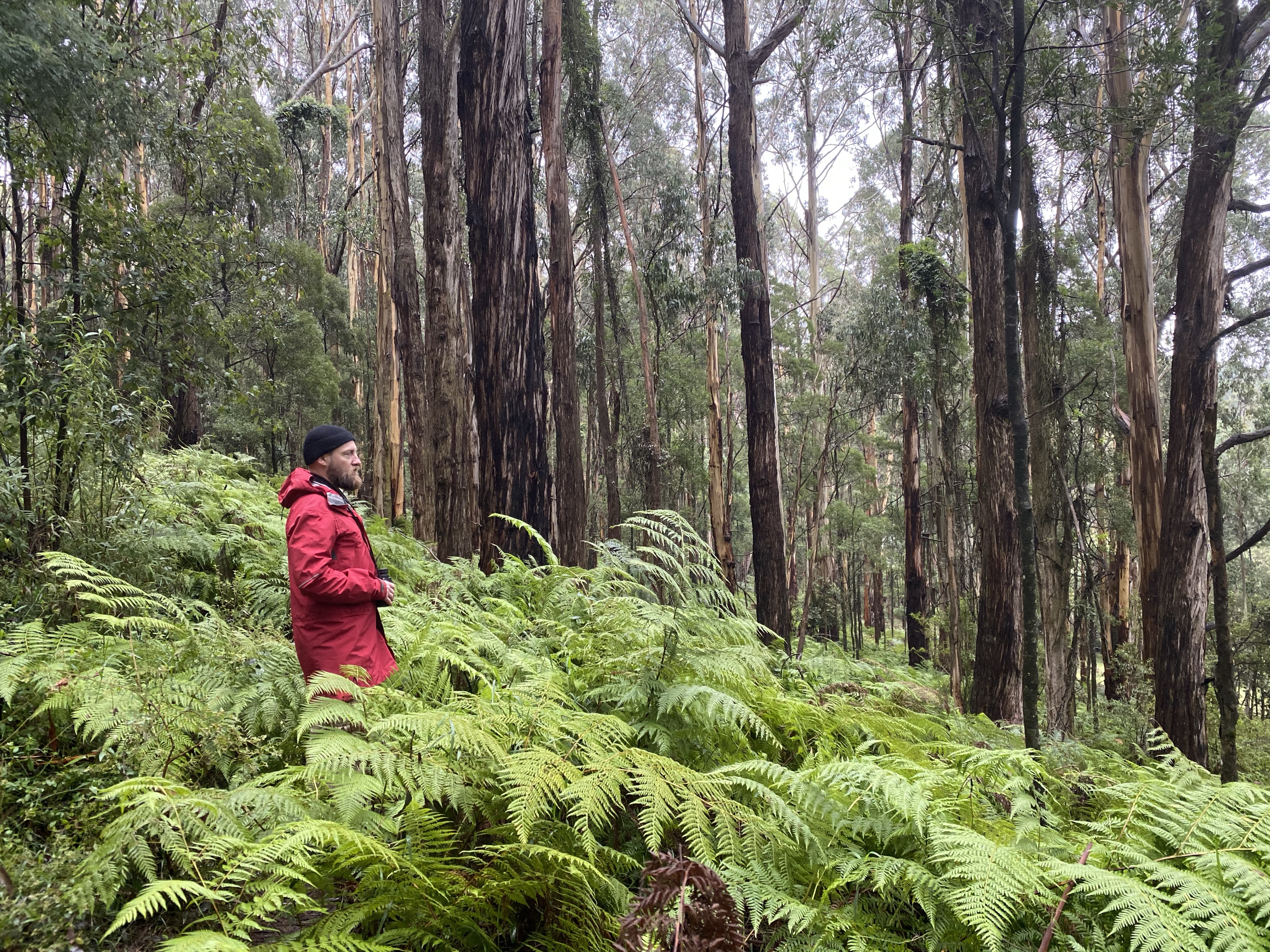 And then we heard it! A loud loud loud lyrebird call up ahead! Kent has seen lyrebirds galore, so he very kindly stood back and said “after you” – because by this time we could tell there was a very good chance we would actually see the lyrebird! We crept forward carefully , passing fresh lyrebird scratchings on the path and nearby, and then we arrived a very thick tangle of ferns, shrubs and tree ferns – and for a good minute we enjoyed this:
And then we heard it! A loud loud loud lyrebird call up ahead! Kent has seen lyrebirds galore, so he very kindly stood back and said “after you” – because by this time we could tell there was a very good chance we would actually see the lyrebird! We crept forward carefully , passing fresh lyrebird scratchings on the path and nearby, and then we arrived a very thick tangle of ferns, shrubs and tree ferns – and for a good minute we enjoyed this:
I posted this video on my favourite birding Facebook groups #BirdtheFeckatHome, Women Birders Australia and Victorian Birders to check in with my bird friends – how many calls is this lyrebird imitating!? So here is the sum total I have so far: Grey Shrike-thrush, Yellow-tailed Black-Cockatoo, Laughing Kookaburra, Australian Magpie, Golden Whistler and/or Rufous Whistler, Pied Currawong, Australian King-Parrot, Eastern Yellow Robin, Australian Owlet-Nightjar, Common Blackbird and Grey Fantail.
Wanting to stick to the path as promised, we couldn’t actually see the bird calling. I was very happy anyway – the call was just incredible! BUT THEN! I stood on a little rock by the path and peered down the slope into the slight clearing about 6 feet away. And behold! a brown lump! Kent – being much taller than me, spotted it at the same time.
It was a male Superb Lyrebird, perched on a log, obscured by vegetation, with his back to us, and his beautiful tail relaxed and at rest. He was singing his absolute heart out down the valley and at a few points we could see that impressive bill opening and closing! After a good minute, he stopped calling, had a bit of a feather shuffle, including his lovely tail plumes, hoped off the little log, strode down the hill out of sight. Woohoo!
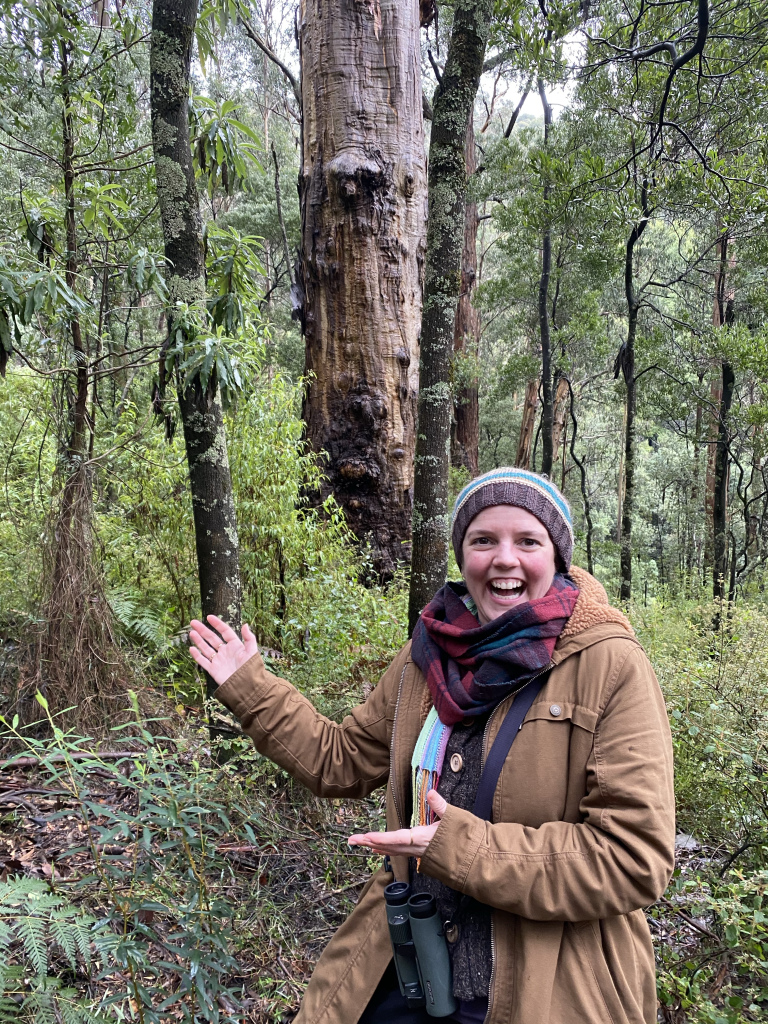
That magic feeling I was talking about at the beginning of this article – well there it is on my face! I cracked up laughing when I saw this photo. JOY! And we didn’t leave the path, and we patiently managed to make out the bird’s form in challenging conditions – now that is an endorphin rush!
The reason magical encounters are magical is because they are MAGICAL – you, the nature lover, quiet, open and receptive, with serendipity and good luck on your side to be in the right place at the right time. The stars align – and you see something you will likely never forget. We have all had those magical moments – our first wild koala, a grey fantail flying so close and eyeballing us – and I am STILL waiting for my first platypus sighting!
Ethical birding is about compassion – put yourself in the bird’s place. If you can’t see it or photograph it without disturbing the bird’s natural behaviour – there is always another day 🙂 I paste below fellow birder and nature lover Janine Duffy’s excellent post regarding ethical birding. The BirdLife Australia guideline are available here.
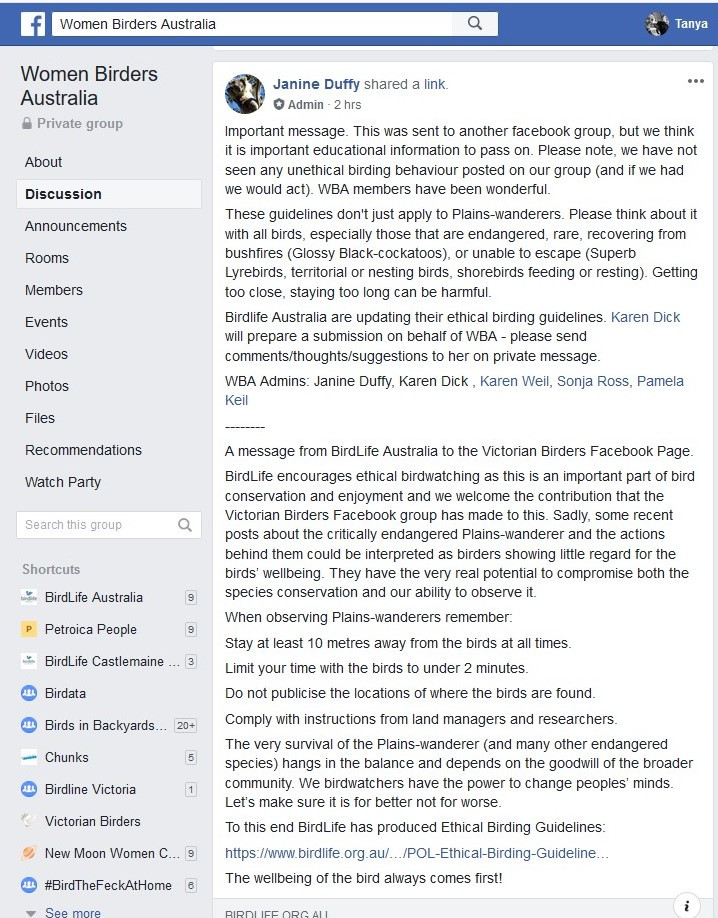
The reference to Plains Wanderers I will not go over here – this is a post about the wonderful Lyrebird after all.
If you would like to know more about the Superb Lyrebird – and the surprising territorial and anti-predator strategies of the amazing female lyrebird – check out Vicky Austin’s awesome article in the most recent issue of Australian Birdlife magazine – available for free to read on the Birding at home website 🙂
https://www.networkbirdlife.org/birding-at-home
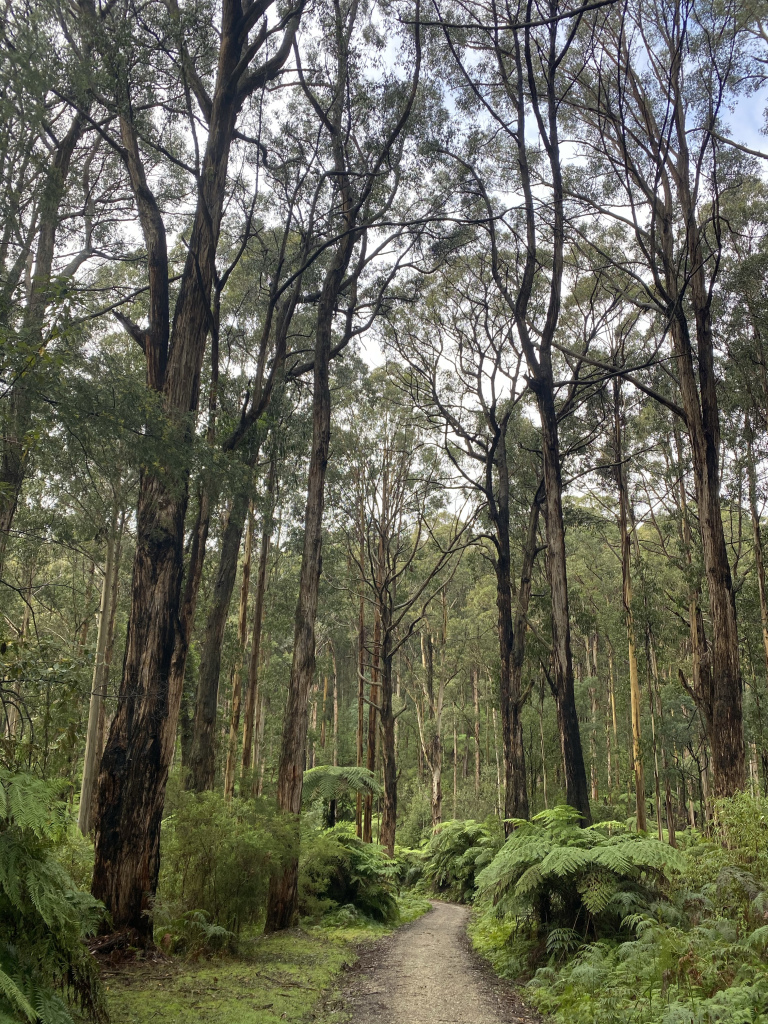
Love this!!! As a lucky lucky person who has seen and heard Superb Lyrebirds often in my beloved East Gippsland, I can confirm that this was a top quality first sighting! Magic happened, it seems. Could be karma. But no-one deserves it more than you Tanya.
Ohhhh!!! Thank you! ❤️❤️ that’s great to hear and so sweet of you to say
So exciting to hear of your encounter. We were in Wollongong a couple of weeks ago and were treated to a superb 20min of a lyre birds repertoire ( many of the birds you mentioned plus a frog and wolf whistle and camera shutter) at Mt Keira just above Wollongong. I had seen a lyre bird when going up Feathertop last november but it was a female and not calling. I met you several years ago at Laura Shorneys garden in Invermay near Ballarat when you were conducting a wildlife tour
________________________________
Wow that was an amazing garden!!! And it was quite a few years ago… so you have enjoyed lyrebird magic too. Aren’t we blessed! Xxx thanks for reading!
Loved your Superb Lyrebird blog! Always an amazing encounter. We are fortunate to have them in our backyard here on the escarpment at Tapitallee, NSW. We occasionally observe them along our driveway through the forest where they love to scratch around and my native gardens regularly get turned over while we are away at work. They are a regular sighting on my birdbath sensor cameras. I have added a large bowl on the ground for them as they tend to splash all the water out and leave very little behind for the smaller forest birds in the heat of summer. They are currently very vocal at several locations on the property. A couple of weeks ago we observed one through the window while preparing breakfast – it was collecting bits of straw I had left in a pile near the shed and wandering up into the dense bush. I am sure it is nesting up there. I carefully listened to your video as I do when I hear them singing here..naming each bird call they are mimicking in my head. I was curious to hear the Victorian repertoire. I have never heard an Australian Owlet Nightjar call mimicked here.
Wow your place sounds amazing! And I love how your lyrebirds would have such a different repertoire! Great you heard the owlet nightjar – bit of debate about that one so great to get further confirmation. Thanks for reading!
Beautiful Tanya xxx
Thanks jacinda! Xxxxx
Thank you dear Tanya! We saw a lyrebird just a few days ago at Mimosa Rocks NP in southern nsw, what a fascinating bird xx
Oh wow B! That’s fantastic! Bet it’s lovely up there. Thanks for reading : ) xxx
Great post and I’m glad you got to see and hear a lyrebird on your outing! My friend and I also went to the Dandenongs for some wet-forest birding before we were back in lockdown. I saw that post from the Lyrebird Study Group a few days afterwards. It’s disappointing to hear. We had stayed on the paths (of course!), but were still lucky to get some great views of lyrebirds on our walk.
sticking to the paths is more of a fun birding challenge I reckon! good on you Emma and thanks for your kind comment 🙂
I enjoyed reading that nature journal. Those photos of the huge trees and beautiful grove of ferns are like another world for me. Nice to see another part of the world I haven’t ventured to. Thanks! William
Thanks William – Glad you enjoyed t!
Lovely read. We have lyrebirds in the backyard (bush block covered in ferns) and often see them racing from the brush turkey’s nest, where we compost food scraps – it’s always exciting. <3
Hi Tanya, a great read with a worthwhile message. Aren’t they mesmerising birds! The species mimicked in the video clip also includes Crimson Rosella….and definitely Golden Whistler. Loved the Owlet-nightjar rendition, too! Agree with all the others listed and the lyrebird’s own song is in there too.
Thanks Carol! ( A somewhat belated reply :)) They are so mesmerising! hope all is well with you
Hey, my name is Craig. We have a place at Seaton. Just out of Heyfeild, Victoria. Over the last fiveish years I’ve seen one. We do hear them all the time though. We know they are lyrebirds, because they wil do several bird calls one after the other, all joined together.
We have 60 acres up there.
We are sure we have found some mounds that he would sing to her. In the winter. We will hear them most mornings. Summer time hardly ever.
What can we do to help them thrive in our area?
Cheers
Hi there Craig! I apologise for taking so long to reply! This blog post by the Friends of Sherbrooke Forest has a lovely Q and A about lyrebirds. As I suspected – the best things you can do for lyrebirds is control cats and dogs, and foxes, and make sure their forest habitat does not get choked with weeds. http://friendsofsherbrookforest.blogspot.com/p/environmental-weeds-many-of-these.html